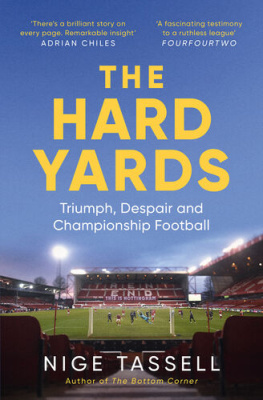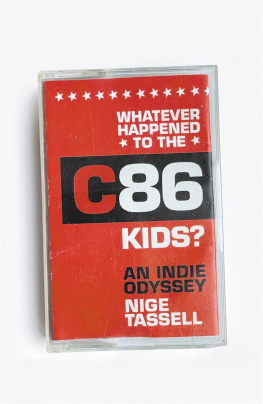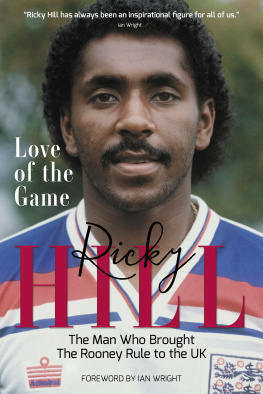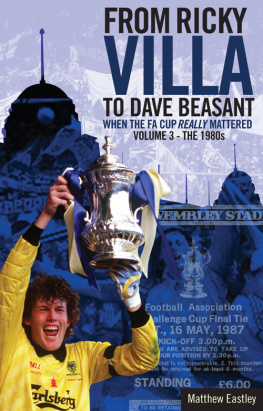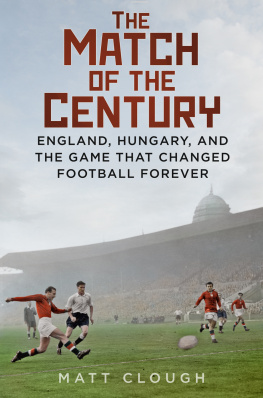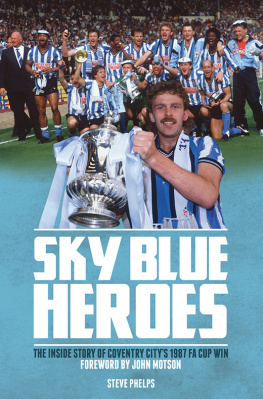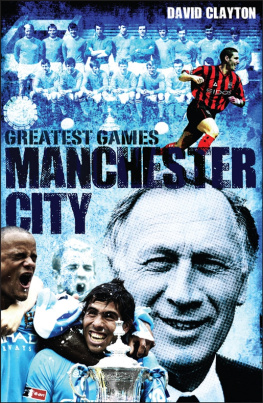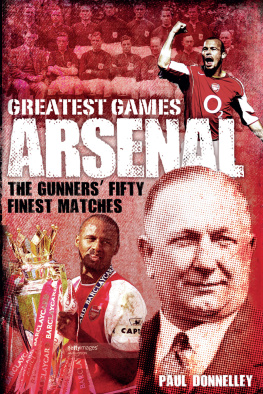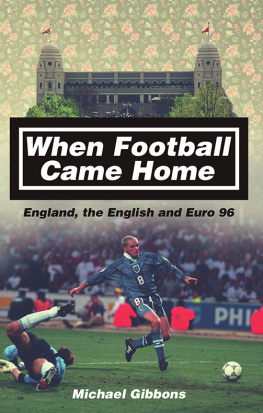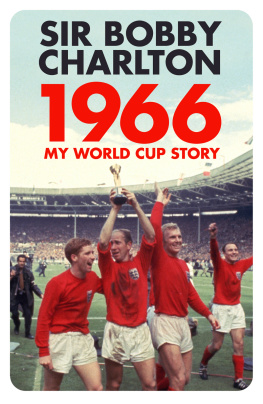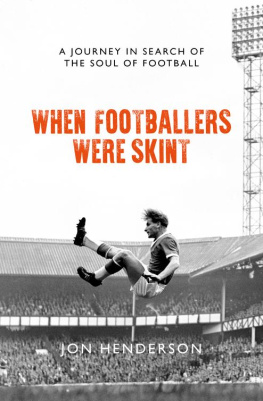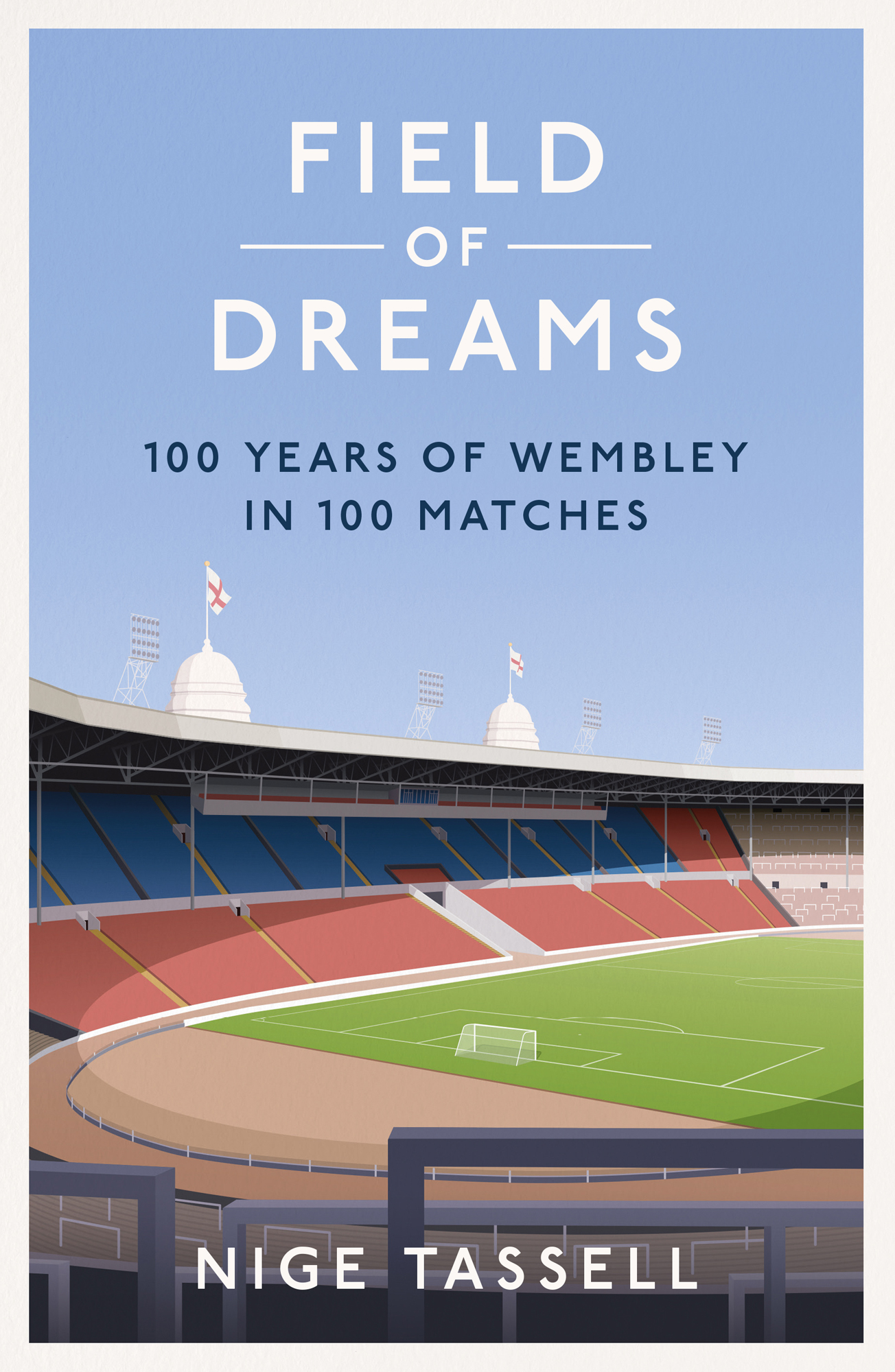CONTENTS
Guide
Field of Dreams
100 Years of Wembley in 100 Matches
Nige Tassell
To Jane, courted at an FA Trophy final all those years ago
INTRODUCTION
Bobby Moore played there forty-seven times and described it as the Mecca of stadiums. Pel never set foot on its turf but still recognised it to be the cathedral of football. Many millions have made the pilgrimage there by car, bus or Metropolitan line over the past 100 years. Watching the beautiful game within its grandstands always was, and still is, a religious experience.
Wembley.
For fans of certain teams, that pilgrimage may only be a once-in-a-lifetime experience. Others who follow more successful clubs, or the national side, have occupied the pews on a more frequent basis. But whatever the denomination, the congregation has been united in prayer, singing its hymns, keeping the faith.
As cathedrals go, the original stadium the beautiful shape of those twin towers aside was never a looker. It wasnt St Pauls or Notre-Dame or Lincoln, painstakingly carved from stone by the massed chisels of master craftsmen. It was created more prosaically from 25,000 tons of concrete and done so in ten short months, a speedy birth that belies its legacy. Originally intended as the showpiece building of the British Empire Exhibition of 1924-25 before being scheduled for demolition within a couple of years, who knew that the stadium would still be hosting cup finals more than three-quarters of a century later? Indeed, one of its two architects Maxwell Ayrton admitted that hed only ever visited one football stadium before designing Wembley, hence the playing areas similarity to Stamford Bridge. A lengthy lifetime wasnt on the agenda.
Nonetheless, over the decades that followed, the stadium became the crucible for the evolution of the national game, its unofficial headquarters, its capital. Other sports got a look-in too rugby league, greyhound racing, speedway and American football, most notably along with live concerts and religious rallies and daredevil motorbike shows.
But football is what made Wembleys name, what ensured its survival. Hundreds of trophies have been lifted in its Royal Box and thousands of goals have been scored on its famously big pitch. These goals are seared into the collective recall of the nation, often accompanied by similarly familiar radio or television commentary.
Every year, sporting history has been made here. Tears of joy have been shed. Tears of sadness too. Its been the field of dreams, but its also the field of nightmares. Dejection and disappointment are the inevitable yin to the yang of celebration and ecstasy. Wembley welcomes both winners and losers alike.
Even though the cathedral eventually fell victim to the wrecking ball before it crumbled itself to dust, and even though a new place of worship has been built (at a notably slower pace) on this hallowed ground, the fervour remains. With its arch reaching towards the heavens, Wembley 2.0 has seen plenty of high drama in its relatively young life. Its as magical to todays footballers as the original stadium was to Pel and Moore. And not just players. In either of its incarnations, the stadium or at least the concept of Wembley has fuelled the imagination of poets and songwriters alike (although it should be noted that John Betjeman was more than thirty years ahead of Chas & Dave when it came to rhyming Wembley with trembly).
Over the course of the next 362 pages, Ive selected 100 matches played at Wembley in the 100 years since that first game, the chaotically oversubscribed White Horse FA Cup final of 1923. Although certain matches for instance, those postmarked 1966 or 1953 or 1996 were the first names on the team sheet, Ive also chosen to turn the spotlight on less well-known encounters, whether obscure exhibition matches or schoolboy internationals or non-league cup finals or the first womens games. These matches are as much a part of the stadiums history as the super-familiar ones because, at all levels of English football, Wembley means so much to players and fans. Whether seasoned international or wide-eyed semi-pro, the thrill remains the same, the acknowledgement that, for the next ninety minutes plus stoppages, theyre playing on the most famous football pitch in the world.
In telling these 100 tales, Ive also heard the first-hand testimony of certain protagonists: players, fans, commentators and, in one instance, a cup-final ballboy now in his eighties. In all cases, regardless of the time that has elapsed, their recall remains perfect, spotless, 20/20. These are the days of their lives, and they dont forget a single detail.
So come take your place on the pews and join the congregation. Our opening lesson begins in 1923
The 1920s
Some people are on the pitch Saturday 28 April 1923 Bolton Wanderers vs West Ham United FA Cup final
Young Ernie Thunder wakes early this morning, despite it being a school-free Saturday. He opens his curtains and gazes out across the English Channel. The gunboat-grey sky, matched by the gunboat-grey sea, cant dampen his excitement. A proper red-letter day lies ahead.
In a couple of hours time, hell head out of the flat above the Paragon Hotel the pub his parents run here in Ramsgate and head towards London, towards the new Empire Stadium. Although he knows this will be the first FA Cup final to be played at Wembley (after years of the showcase match being shunted between the likes of Stamford Bridge, Old Trafford, Crystal Palace, Bramall Lane and Goodison Park), 13-year-old Ernie couldnt possibly imagine how chaotic this afternoons events will turn out to be. Questions will be asked about it in the House of Commons next week, with the local MP, one Oswald Mosley, being admonished by the Speaker for talk of the hooliganism imported there. Whether hooliganism or good-natured enthusiasm, people will know of this oversubscribed match in a hundred years time.
Football isnt Ernies first love. Hell go on to play at a decent amateur level as a young man, but cricket is his calling, a passion far from hindered by his cousin being the England wicketkeeper/batsman Les Ames. But the new cricket season doesnt start for another four days, so today his attentions are elsewhere. A Spurs fan, he has no skin in todays game. Its the new stadium thats his main focus.
His parents are staying behind in Ramsgate to run the pub on what will be a busy Saturday lunchtime in late spring in the seaside town, so Ernie is travelling to Wembley in the company of a chaperone, his 26-year-old aunt, Hilda. The pair are close; she too works behind the bar and lives in the flat above.
Ernies father knows a man who knows a man. Hes called in a few favours and, safely in her handbag, Hilda has tickets for seats in the North Stand at the new stadium. Aunt and nephew head off to the station, skipping as they go.
The stadium has been built for next years British Empire Exhibition, an ambitious project that aims to stimulate trade, strengthen bonds that bind mother Country to her Sister States and Daughters, to being into close contact the one with each other, to enable all who owe allegiance to the British flag to meet on common ground and learn to know each other. The Empire Stadium represents that rare beast: a building project thats completed ahead of schedule. Its taken just ten months to construct and the Football Association has decided to shift the FA Cup final here, hopeful this will be its permanent home, even though the stadium is due for demolition at the end of the Exhibition. A new railway station is open to passengers for the first time today. It has a snappy name: Exhibition Station (Wembley).

